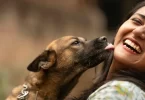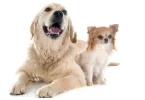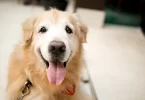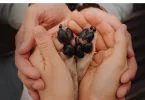The first few months your new puppy spends in your home will set the tone for your life together. With a little training, you can socialize your pup for positive people skills.
Although the following 5 steps can help you raise a well-rounded, friendly pooch, some dogs require more training than others. Don’t be afraid to reach out to a trainer or behaviorist for help!
#5. Socialize from Puppyhood & Beyond
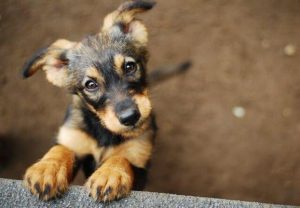
Introduce your puppy to new sights, smells, people and experiences with lots of positive energy and treats on hand. He’ll quickly learn that new experiences equal yummy snacks and games. By continuing these positive introductions throughout your dog’s life, you instill in him a love of new places, people, and things. In other words, you’ll raise a friendly dog.
#4. Make your Dog Work for Rewards

Nothing in life is free, even if you’re a dog. So to help reinforce your role as leader of the pack and keeper of treats, ask your dog to earn rewards through actions throughout the day. Maybe ask for a “sit” or “down” before serving his supper. Request that he “pay attention” before clipping on the leash. Add in reward occasions to everyday activities and you’ll not only encourage obedience but also help raise a well-adjusted dog.
#3. Counter Bad Experiences with Good Ones

If your dog has a bad experience, make sure you repeat a similar experience with a positive outcome as soon as possible. For example, if he growls at dogs of a certain breed due to an incident at the park, introduce him to several friendly dogs of that same breed. Or, if he’s afraid of people wearing hats, ask a handful of hat-wearing folks to give him treats. This way, you’ll help him overcome his fear or aversion quickly and safely.
#2. Avoid Frustrating your Dog

Nobody likes being teased, especially dogs. Help your dog avoid interacting with things he cannot have. For example, if he gets anxious when he sees people and dogs outside the windows, block his view by shutting the curtains or moving the couch.
Most dogs are frustrated when they are not allowed to meet other dogs they see, including those they must pass on a leash, so when you’re out on a walk, let him interact with other dogs (with permission from the owner) from the safety of a loose leash hold. This way, he can greet other dogs without uncomfortable restraint and carry on his greeting ritual. However, if your dog lunges or barks at other dogs, consider consulting a trainer or behaviorist to evaluate whether your dog has an aggression problem.
#1. Practice Food Bowl Exercises & Object Exchanges

Growling, snapping and/or stiffening up when someone approaches your dog’s food bowl or toys is a serious issue. Help train your dog against resource-guarding by dropping extra special goodies into his bowl while he’s eating. Repeat this often to associate a positive outcome with people approaching and putting their hands into his food bowl while he eats.
Also, practice exchanging things that your dog has for other stuff he finds equally or more valuable. For example, offer your dog a treat when he drops his tennis ball for you. Or offer a second tennis ball in exchange if your dog finds balls more valuable than food. If your dog is reluctant, give the reward when he drops his item but does not take it away.
Remember, allowing a trainer to come in and observe your dog interacting with you and others is not a failure on your part! Professionals can help expose behavior problems, teach you how to fix them, and save you lots of frustration.
